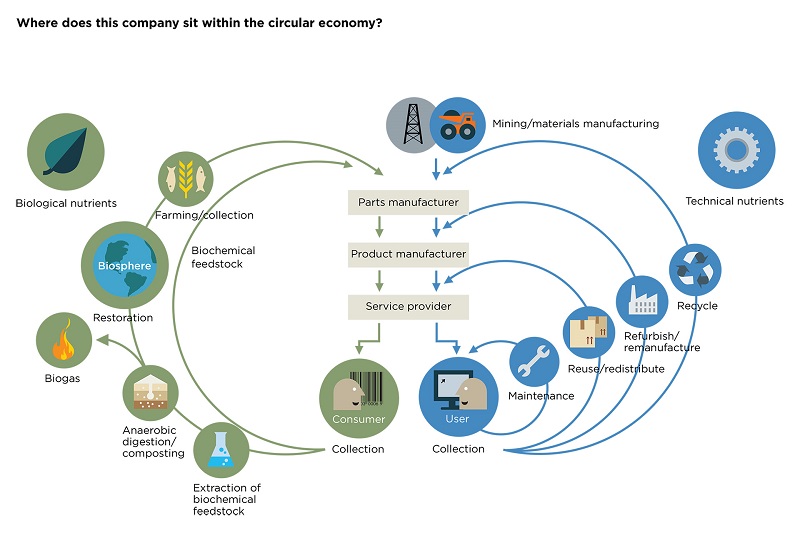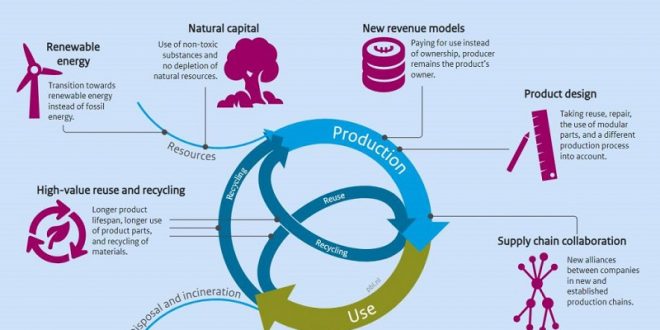The 20th century started with a lot of debate and focus on climate change. This climate change term has now transformed into many other relevant terms like sustainability and the United Nations has developed a set of 17 Sustainable Development Goals (SDGs) which all the member countries agreed upon. These seventeen SDGs encompass all major components of life and provide a comprehensive framework to achieve sustainability. Every sector of human activity is thriving to achieve sustainability and construction is no exception.

Construction history runs in tandem with human history and from basic shelter to the sophisticated industrial complexes construction industry has evolved a lot. However, it is one of the resource-intensive industry and almost 11 industries run in conjunction with this industry. For example, glass, cement, tiles, and steel, etc. The disruption caused by the construction sector is multifaceted and that’s why we need to adopt an integrated and circular design approach to achieve sustainability in the construction sector. Let’s just define the circular economy,
“A circular economy is one that is restorative and regenerative by design, and which aims to keep products, components, and materials at their highest utility and value at all times, distinguishing between technical and biological cycles”. Ellen MacArthur Foundation.
There are several things that need to be considered before talking about the circular design approach in the built environment. The discussion of building’s sustainability is normally confused with energy efficiency because of the fact that the built environment consumes 40% of the total energy consumption. On the other hand, normally it is overlooked that the built environment components and other finish materials are produced with energy-intensive processes that lead to higher embodied energy. The efforts to reduce embodied energy paved the path for the circular design or economy approach.
The circular economy in construction can be a daunting task as this industry is infamous to resist change. However, with the concept of green buildings things are evolving as green building rating systems are pushing to scale up the business models and not only transform the design of buildings but to evolve the supply chain of this whole complex process. The best part is the pace of this evolution is quite fast in this era of innovation and startups. International WELL Building Institute goes beyond the material reuse and recycling to the extent that how any particular material use affects human life. Either it contains toxic material that can cause harm or disrupt the natural eco-system in their cradle to grave life cycle or emit volatile organic compounds over their use phase. Green Buildings standards like LEED, BREEAM, and Green star have a particular focus on materials sustainability and award points based on different criteria. There are mainly two kinds of classification systems based on health and environmental effects of any product throughout their life cycle and they are known as
- Health Product Declarations (HPDs)
- Environmental Product Declarations (EPDs)
Focus on the individual component and life cycle approach of products is gaining popularity and the process has been standardized through various certifications systems. Cradle to Cradle Product Innovation Institute is the leading institute that offers product certifications based on their own comprehensive process. The C2C Product Innovation Institute certified products are pre-certified for LEED projects.
The circular economy is fundamentally the value enhancement. Considering the whole life cycle of a product and then designing it in a way that the product in any particular system doesn’t go waste but becomes an “input” for another system and ultimately reducing the demand of virgin materials. It’s a proactive approach and reduces waste from Pre and Post-consumer stages of products.
The concepts of Circular economy are inextricably linked to the design of mother nature itself. The design of nature is that nothing goes to waste and everything either enter to a new system or replenishes the eco-system again in any form.
Every phase of the built environment is linked to this concept and vital in the implementation of circular design ideas. For example, choices while commissioning, maintenance and demolition can have a significant impact on the whole construction life cycle of a product or a building. Data is the key to conduct analysis, define boundaries and end of life scenarios. To facilitate the analysis and decision-making various software and data sets are available. Simapro and GaBi are the most well-known software with comprehensive data sets like eco-invent. Further, modular construction and pre-fabrication are also one of the best examples where circular economy concepts are applied. Recently, Qatar has completed a new stadium with cargo containers that will be taken away from the stadium after the FIFA 2022 World Cup and re-use in future for other purposes including stadiums.
What should be done to implement this? The answer lies in innovation, industry transformation and defining new business models to make it a daily life practice rather than a surreal idea. All the stakeholders must adapt and embrace this transformation as it goes beyond the cost, energy, and carbon.
Author: Muhammad Shoaib
